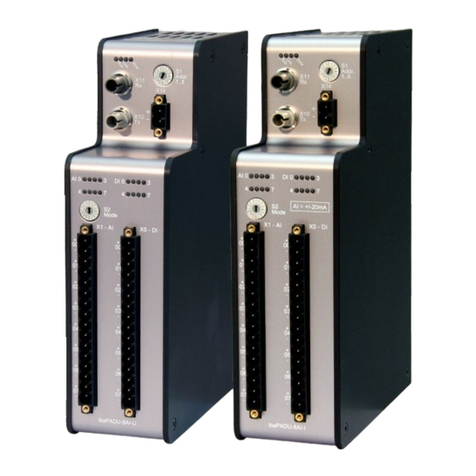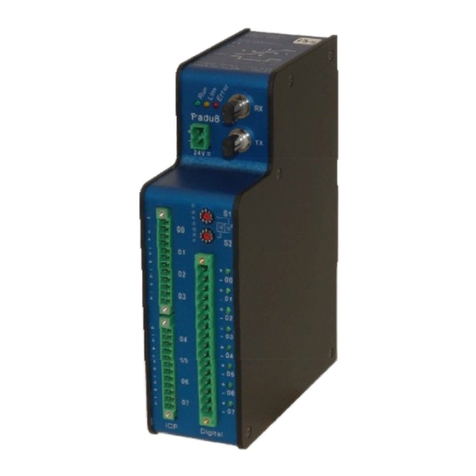
ibaPADU-8/ -16/ -32/ -32-R Manual
Issue 3.3 3
Contents
1About this manual.............................................................................................5
1.1 Target group ...................................................................................................... 5
1.2 Notations ........................................................................................................... 5
1.3 Used symbols ................................................................................................... 6
2Introduction .......................................................................................................7
3Contents of delivery..........................................................................................8
4Safety Instructions............................................................................................8
5System prerequisites........................................................................................9
5.1 Hardware ..........................................................................................................9
5.2 Software ............................................................................................................ 9
6Mounting and Dismounting............................................................................10
6.1 ibaPADU-8 ...................................................................................................... 10
6.1.1 Mounting ......................................................................................................... 10
6.1.2 Dismounting .................................................................................................... 10
6.2 ibaPADU-32-R................................................................................................. 10
6.2.1 Mounting ......................................................................................................... 10
6.2.2 Dismounting .................................................................................................... 10
7System topologies and addressing............................................................... 11
7.1 Addressing ...................................................................................................... 11
7.2 Examples for topologies.................................................................................. 12
8Product properties..........................................................................................14
8.1 Properties........................................................................................................ 14
8.2 Device, operating elements and connectors................................................... 15
8.2.1 ibaPADU-8 (all types)...................................................................................... 15
8.2.2 ibaPADU-16/ibaPADU-32/ibaPADU-32-R ....................................................... 16
8.2.3 Run, link and error LED indicators .................................................................. 18
8.2.4 Analog and digital connector pinning .............................................................. 18
8.2.5 Service interface (X12) ................................................................................... 19
8.2.6 Shield connector(s) for physical earth............................................................. 19
8.3 Devices for different analog input physics....................................................... 20
8.3.1 ibaPADU-8 and ibaPADU-8 High Impedance ................................................. 20
8.3.2 ibaPADU-8 (standard) ..................................................................................... 20
8.3.3 ibaPADU-8- (High Impedance)........................................................................ 20
8.3.4 ibaPADU-8-F1 ................................................................................................. 21
8.3.5 ibaPADU-8-I .................................................................................................... 21
9Configuration/Engineering.............................................................................22
9.1 Adjustable device parameters and modes of operation .................................. 22

































